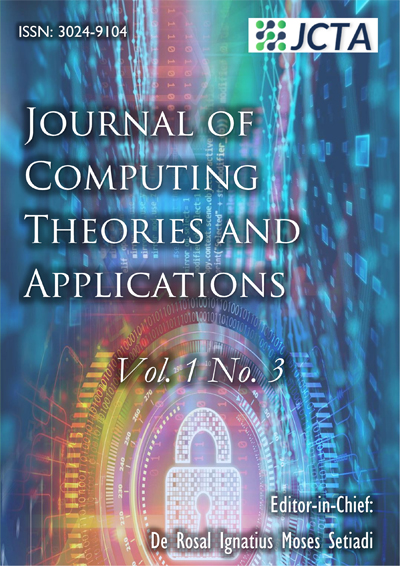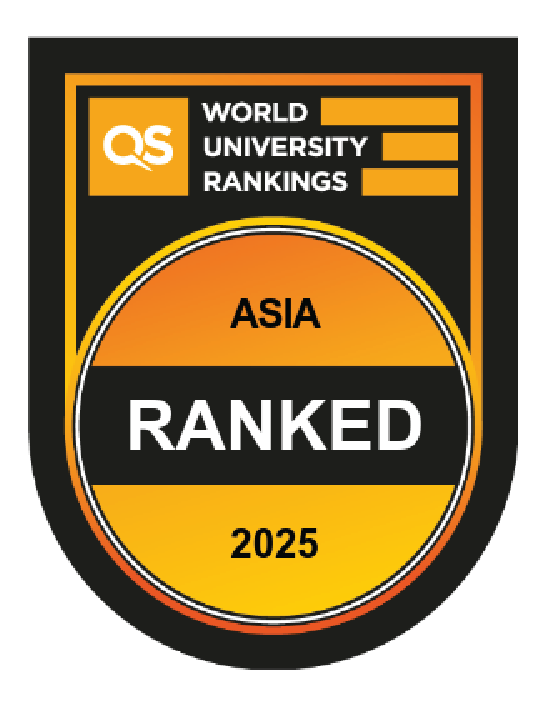BEHeDaS: A Blockchain Electronic Health Data System for Secure Medical Records Exchange
DOI:
https://doi.org/10.62411/jcta.9509Abstract
Blockchain platforms propagate into every facet, including managing medical services with professional and patient-centered applications. With its sensitive nature, record privacy has become imminent with medical services for patient diagnosis and treatments. The nature of medical records has continued to necessitate their availability, reachability, accessibility, security, mobility, and confidentiality. Challenges to these include authorized transfer of patient records on referral, security across platforms, content diversity, platform interoperability, etc. These, are today – demystified with blockchain-based apps, which proffers platform/application services to achieve data features associated with the nature of the records. We use a permissioned-blockchain for healthcare record management. Our choice of permission mode with a hyper-fabric ledger that uses a world-state on a peer-to-peer chain – is that its smart contracts do not require a complex algorithm to yield controlled transparency for users. Its actors include patients, practitioners, and health-related officers as users to create, retrieve, and store patient medical records and aid interoperability. With a population of 500, the system yields a transaction (query and https) response time of 0.56 seconds and 0.42 seconds, respectively. To cater to platform scalability and accessibility, the system yielded 0.78 seconds and 063 seconds, respectively, for 2500 users.References
R. E. Yoro, F. O. Aghware, M. I. Akazue, A. E. Ibor, and A. A. Ojugo, “Evidence of personality traits on phishing attack menace among selected university undergraduates in Nigerian,” Int. J. Electr. Comput. Eng., vol. 13, no. 2, p. 1943, Apr. 2023, doi: 10.11591/ijece.v13i2.pp1943-1953.
D. Nahavandi, R. Alizadehsani, A. Khosravi, and U. R. Acharya, “Application of artificial intelligence in wearable devices: Oppor-tunities and challenges,” Comput. Methods Programs Biomed., vol. 213. December, 2022, doi: 10.1016/j.cmpb.2021.106541.
C. Esposito, A. De Santis, G. Tortora, H. Chang, and K.-K. R. Choo, “Blockchain: A Panacea for Healthcare Cloud-Based Data Security and Privacy?,” IEEE Cloud Comput., vol. 5, no. 1, pp. 31–37, Jan. 2018, doi: 10.1109/MCC.2018.011791712.
P. De Giovanni, “Blockchain and smart contracts in supply chain management: A game theoretic model,” Int. J. Prod. Econ., vol. 228, p. 107855, Oct. 2020, doi: 10.1016/j.ijpe.2020.107855.
M. Castro and B. Liskov, “Practical byzantine fault tolerance and proactive recovery,” ACM Trans. Comput. Syst., vol. 20, no. 4, pp. 398–461, Nov. 2002, doi: 10.1145/571637.571640.
A. C. Smith et al., “Telehealth for global emergencies: Implications for coronavirus disease 2019 (COVID-19),” J. Telemed. Telecare, vol. 26, no. 5, pp. 309–313, Jun. 2020, doi: 10.1177/1357633X20916567.
K. Afifah, I. N. Yulita, and I. Sarathan, “Sentiment Analysis on Telemedicine App Reviews using XGBoost Classifier,” 2021 Int. Conf. Artif. Intell. Big Data Anal., pp. 22–27, 2022, doi: 10.1109/icaibda53487.2021.9689735.
A. A. Ojugo and E. O. Ekurume, “Predictive Intelligent Decision Support Model in Forecasting of the Diabetes Pandemic Using a Reinforcement Deep Learning Approach,” Int. J. Educ. Manag. Eng., vol. 11, no. 2, pp. 40–48, Apr. 2021, doi: 10.5815/ijeme.2021.02.05.
J. Liu, X. Sun, and K. Song, “A Food Traceability Framework Based on Permissioned Blockchain,” J. Cyber Secur., vol. 2, no. 2, pp. 107–113, 2020, doi: 10.32604/jcs.2020.011222.
A. A. Ojugo, M. I. Akazue, P. O. Ejeh, C. Odiakaose, and F. U. Emordi, “DeGATraMoNN: Deep Learning Memetic Ensemble to Detect Spam Threats via a Content-Based Processing,” Kongzhi yu Juece/Control Decis., vol. 38, no. 01, pp. 667–678, 2023.
F. O. Aghware, R. E. Yoro, P. O. Ejeh, C. C. Odiakaose, F. U. Emordi, and A. A. Ojugo, “Sentiment analysis in detecting sophis-tication and degradation cues in malicious web contents,” Kongzhi yu Juece/Control Decis., vol. 38, no. 01, p. 653, 2023.
A. E. Ibor, E. B. Edim, and A. A. Ojugo, “Secure Health Information System with Blockchain Technology,” J. Niger. Soc. Phys. Sci., vol. 5, no. 992, pp. 1–8, 2023, doi: 10.46481/jnsps.2022.992.
J. R. Amalraj and R. Lourdusamy, “A Novel distributed token-based algorithm using secret sharing scheme for secure data access control,” Int. J. Comput. Networks Appl., vol. 9, no. 4, p. 374, Aug. 2022, doi: 10.22247/ijcna/2022/214501.
E. Ileberi, Y. Sun, and Z. Wang, “A machine learning based credit card fraud detection using GA algorithm for feature selection,” J. Big Data, vol. 9, no. 1, p. 24, Dec. 2022, doi: 10.1186/s40537-022-00573-8.
G. Sasikala et al., “An Innovative Sensing Machine Learning Technique to Detect Credit Card Frauds in Wireless Communications,” Wirel. Commun. Mob. Comput., vol. 2022, pp. 1–12, Jun. 2022, doi: 10.1155/2022/2439205.
A. A. Ojugo, C. O. Obruche, and A. O. Eboka, “Quest For Convergence Solution Using Hybrid Genetic Algorithm Trained Neural Network Model For Metamorphic Malware Detection,” ARRUS J. Eng. Technol., vol. 2, no. 1, pp. 12–23, Nov. 2021, doi: 10.35877/jetech613.
K. Christidis and M. Devetsikiotis, “Blockchains and Smart Contracts for the Internet of Things,” IEEE Access, vol. 4, pp. 2292–2303, 2016, doi: 10.1109/ACCESS.2016.2566339.
S. J. Damoska and A. Erceg, “Blockchain Technology toward Creating a Smart Local Food Supply Chain,” Computers, vol. 11, no. 6, p. 95, Jun. 2022, doi: 10.3390/computers11060095.
A. A. Ojugo and D. A. Oyemade, “Boyer moore string-match framework for a hybrid short message service spam filtering tech-nique,” IAES Int. J. Artif. Intell., vol. 10, no. 3, pp. 519–527, 2021, doi: 10.11591/ijai.v10.i3.pp519-527.
A. A. Ojugo and O. D. Otakore, “Intelligent cluster connectionist recommender system using implicit graph friendship algorithm for social networks,” IAES Int. J. Artif. Intell., vol. 9, no. 3, p. 497~506, 2020, doi: 10.11591/ijai.v9.i3.pp497-506.
K. Fan, Z. Bao, M. Liu, A. V. Vasilakos, and W. Shi, “Dredas: Decentralized, reliable and efficient remote outsourced data auditing scheme with blockchain smart contract for industrial IoT,” Futur. Gener. Comput. Syst., vol. 110, pp. 665–674, Sep. 2020, doi: 10.1016/j.future.2019.10.014.
A. A. Ojugo et al., “Evolutionary Model for Virus Propagation on Networks,” Autom. Control Intell. Syst., vol. 3, no. 4, p. 56, 2015, doi: 10.11648/j.acis.20150304.12.
M. I. Akazue, I. A. Debekeme, A. E. Edje, C. Asuai, and U. J. Osame, “UNMASKING FRAUDSTERS: Ensemble Features Selec-tion to Enhance Random Forest Fraud Detection,” J. Comput. Theor. Appl., vol. 1, no. 2, pp. 201–211, Dec. 2023, doi: 10.33633/jcta.v1i2.9462.
G. Habib, S. Sharma, S. Ibrahim, I. Ahmad, S. Qureshi, and M. Ishfaq, “Blockchain Technology: Benefits, Challenges, Applications, and Integration of Blockchain Technology with Cloud Computing,” Futur. Internet, vol. 14, no. 11, p. 341, Nov. 2022, doi: 10.3390/fi14110341.
A. A. Ojugo, D. A. Oyemade, D. Allenotor, O. B. Longe, and C. N. Anujeonye, “Comparative Stochastic Study for Credit-Card Fraud Detection Models,” African J. Comput. ICT, vol. 8, no. 1, pp. 15–24, 2015, [Online]. Available: www.ajocict.net
E. Dourado and J. Brito, “Cryptocurrency,” in The New Palgrave Dictionary of Economics, London: Palgrave Macmillan UK, 2014, pp. 1–9. doi: 10.1057/978-1-349-95121-5_2895-1.
H. Tingfei, C. Guangquan, and H. Kuihua, “Using Variational Auto Encoding in Credit Card Fraud Detection,” IEEE Access, vol. 8, pp. 149841–149853, 2020, doi: 10.1109/ACCESS.2020.3015600.
R. De’, N. Pandey, and A. Pal, “Impact of digital surge during Covid-19 pandemic: A viewpoint on research and practice,” Int. J. Inf. Manage., vol. 55, no. June, p. 102171, 2020, doi: 10.1016/j.ijinfomgt.2020.102171.
P. K. Paul, “Blockchain Technology and its Types—A Short Review,” Int. J. Appl. Sci. Eng., vol. 9, no. 2, 2021, doi: 10.30954/2322-0465.2.2021.7.
S. Linoy, N. Stakhanova, and A. Matyukhina, “Exploring Ethereum’s Blockchain Anonymity Using Smart Contract Code Attribu-tion,” in 2019 15th Conference on Network and Service Management, IEEE, Oct. 2019, pp. 1–9. doi: 10.23919/CNSM46954.2019.9012681.
M. Valenta and P. Sandner, “Comparison of Ethereum, Hyperledger Fabric and Corda,” Frankfurt Sch. Blockchain Cent., no. June, p. 8, 2017, [Online]. Available: www.fs-blockchain.decontact@fs-blockchain.de
S. Linoy, N. Stakhanova, and S. Ray, “De?anonymizing Ethereum blockchain smart contracts through code attribution,” Int. J. Netw. Manag., vol. 31, no. 1, Jan. 2021, doi: 10.1002/nem.2130.
K. Rantos, G. Drosatos, A. Kritsas, C. Ilioudis, A. Papanikolaou, and A. P. Filippidis, “A Blockchain-Based Platform for Consent Management of Personal Data Processing in the IoT Ecosystem,” Secur. Commun. Networks, vol. 2019, pp. 1–15, Oct. 2019, doi: 10.1155/2019/1431578.
E. Regnath, N. Shivaraman, S. Shreejith, A. Easwaran, and S. Steinhorst, “Blockchain, what time is it? Trustless Datetime Syn-chronization for IoT,” in 2020 International Conference on Omni-layer Intelligent Systems (COINS), IEEE, Aug. 2020, pp. 1–6. doi: 10.1109/COINS49042.2020.9191420.
Y. Lu, X. Huang, Y. Dai, S. Maharjan, and Y. Zhang, “Blockchain and Federated Learning for Privacy-Preserved Data Sharing in Industrial IoT,” IEEE Trans. Ind. Informatics, vol. 16, no. 6, pp. 4177–4186, Jun. 2020, doi: 10.1109/TII.2019.2942190.
M. Gasco-Hernandez, W. Feng, and J. R. Gil-Garcia, “Providing Public Value through Data Sharing: Understanding Critical Factors of Food Traceability for Local Farms and Institutional Buyers,” 2018. doi: 10.24251/HICSS.2018.285.
M. Crosby, P. Pattanayak, S. Verma, and V. Kalyanaraman, “Blockchain technology: beyond bitcoin,” Appl. Innov. Rev., vol. 27, no. 4–5, pp. 222–228, 2016, doi: 10.15358/0935-0381-2015-4-5-222.
S. Gokarn and A. Choudhary, “Modeling the key factors influencing the reduction of food loss and waste in fresh produce supply chains,” J. Environ. Manage., vol. 294, p. 113063, Sep. 2021, doi: 10.1016/j.jenvman.2021.113063.
M. S. Sunarjo, H.-S. Gan, and D. R. I. M. Setiadi, “High-Performance Convolutional Neural Network Model to Identify COVID-19 in Medical Images,” J. Comput. Theor. Appl., vol. 1, no. 1, pp. 19–30, 2023, doi: 10.33633/jcta.v1i1.8936.
H. Kabir Bako, M. Abba Dandago, and S. Shamsudeen Nassarawa, “Food Traceability System: Current State and Future Needs of the Nigerian Poultry and Poultry Product Supply Chain,” Chem. Biomol. Eng., vol. 4, no. 3, p. 40, 2019, doi: 10.11648/j.cbe.20190403.11.
D. Mao, F. Wang, Z. Hao, and H. Li, “Credit Evaluation System Based on Blockchain for Multiple Stakeholders in the Food Supply Chain,” Int. J. Environ. Res. Public Health, vol. 15, no. 8, p. 1627, Aug. 2018, doi: 10.3390/ijerph15081627.
A. A. Ojugo and O. Nwankwo, “Spectral-Cluster Solution For Credit-Card Fraud Detection Using A Genetic Algorithm Trained Modular Deep Learning Neural Network,” JINAV J. Inf. Vis., vol. 2, no. 1, pp. 15–24, Jan. 2021, doi: 10.35877/454RI.jinav274.
J. Goldenfein and A. Leiter, “Legal Engineering on the Blockchain: ‘Smart Contracts’ as Legal Conduct,” Law Crit., vol. 29, no. 2, pp. 141–149, Jul. 2018, doi: 10.1007/s10978-018-9224-0.
S. Saberi, M. Kouhizadeh, J. Sarkis, and L. Shen, “Blockchain technology and its relationships to sustainable supply chain man-agement,” Int. J. Prod. Res., vol. 57, no. 7, pp. 2117–2135, Apr. 2019, doi: 10.1080/00207543.2018.1533261.
A. A. Ojugo and R. E. Yoro, “Extending the three-tier constructivist learning model for alternative delivery: ahead the COVID-19 pandemic in Nigeria,” Indones. J. Electr. Eng. Comput. Sci., vol. 21, no. 3, p. 1673, Mar. 2021, doi: 10.11591/ijeecs.v21.i3.pp1673-1682.
K. Leng, Y. Bi, L. Jing, H.-C. Fu, and I. Van Nieuwenhuyse, “Research on agricultural supply chain system with double chain ar-chitecture based on blockchain technology,” Futur. Gener. Comput. Syst., vol. 86, pp. 641–649, Sep. 2018, doi: 10.1016/j.future.2018.04.061.
J. Polge, J. Robert, and Y. Le Traon, “Permissioned blockchain frameworks in the industry: A comparison,” ICT Express, vol. 7, no. 2, pp. 229–233, Jun. 2021, doi: 10.1016/j.icte.2020.09.002.
K. Behnke and M. . Janssen, “Boundary conditions for traceability in food supply chains using blockchain technology,” Int. J. Inf. Manage., vol. 52, p. 101969, Jun. 2020, doi: 10.1016/j.ijinfomgt.2019.05.025.
M. P. Caro, M. S. Ali, M. Vecchio, and R. Giaffreda, “Blockchain-based traceability in Agri-Food supply chain management: A practical implementation,” in 2018 IoT Vertical and Topical Summit on Agriculture - Tuscany (IOT Tuscany), IEEE, May 2018, pp. 1–4. doi: 10.1109/IOT-TUSCANY.2018.8373021.
C. N. Verdouw, J. Wolfert, A. J. M. Beulens, and A. Rialland, “Virtualization of food supply chains with the internet of things,” J. Food Eng., vol. 176, pp. 128–136, May 2016, doi: 10.1016/j.jfoodeng.2015.11.009.
A. A. Ojugo, P. O. Ejeh, C. C. Odiakaose, A. O. Eboka, and F. U. Emordi, “Improved distribution and food safety for beef pro-cessing and management using a blockchain-tracer support framework,” Int. J. Informatics Commun. Technol., vol. 12, no. 3, p. 205, Dec. 2023, doi: 10.11591/ijict.v12i3.pp205-213.
A. A. Ojugo and O. D. Otakore, “Improved Early Detection of Gestational Diabetes via Intelligent Classification Models: A Case of the Niger Delta Region in Nigeria,” J. Comput. Sci. Appl., vol. 6, no. 2, pp. 82–90, 2018, doi: 10.12691/jcsa-6-2-5.
F. Tian, “An agri-food supply chain traceability system for China based on RFID & blockchain technology,” in 13th Conference on Service Systems and Service Management, IEEE, Jun. 2016, pp. 1–6. doi: 10.1109/ICSSSM.2016.7538424.
K. Kakhi, R. Alizadehsani, H. M. D. Kabir, A. Khosravi, S. Nahavandi, and U. R. Acharya, “The internet of medical things and artificial intelligence: trends, challenges, and opportunities,” Biocybern. Biomed. Eng., vol. 42, no. 3, pp. 749–771, 2022, doi: 10.1016/j.bbe.2022.05.008.
S. R. Guntur, R. R. Gorrepati, and V. R. Dirisala, “Internet of Medical Things,” in Medical Big Data and Internet of Medical Things, no. October 2018, Boca Raton : Taylor & Francis, [2019]: CRC Press, 2018, pp. 271–297. doi: 10.1201/9781351030380-11.
I. Abu-elezz, A. Hassan, A. Nazeemudeen, M. Househ, and A. Abd-alrazaq, “The benefits and threats of blockchain technology in healthcare: A scoping review,” Int. J. Med. Inform., vol. 142, p. 104246, Oct. 2020, doi: 10.1016/j.ijmedinf.2020.104246.
M. I. Akazue, A. A. Ojugo, R. E. Yoro, B. O. Malasowe, and O. Nwankwo, “Empirical evidence of phishing menace among un-dergraduate smartphone users in selected universities in Nigeria,” Indones. J. Electr. Eng. Comput. Sci., vol. 28, no. 3, pp. 1756–1765, Dec. 2022, doi: 10.11591/ijeecs.v28.i3.pp1756-1765.
A. A. Ojugo and D. O. Otakore, “Redesigning Academic Website for Better Visibility and Footprint: A Case of the Federal Uni-versity of Petroleum Resources Effurun Website,” Netw. Commun. Technol., vol. 3, no. 1, p. 33, Jul. 2018, doi: 10.5539/nct.v3n1p33.
H. Dang, T. T. A. Dinh, D. Loghin, E.-C. Chang, Q. Lin, and B. C. Ooi, “Towards Scaling Blockchain Systems via Sharding,” in Proc. of 2019 International Conference on Management of Data, New York, Jun. 2019, pp. 123–140. doi: 10.1145/3299869.3319889.
R. E. Gier et al., “Evaluation of the therapeutic effect of levamisole in treatment of recurrent aphthous stomatitis.,” J. Oral Pathol., vol. 7, no. 6, pp. 405–13, 1978, doi: 10.1111/j.1600-0714.1978.tb01610.x.
A. A. Ojugo and A. O. Eboka, “Assessing Users Satisfaction and Experience on Academic Websites: A Case of Selected Nigerian Universities Websites,” Int. J. Inf. Technol. Comput. Sci., vol. 10, no. 10, pp. 53–61, 2018, doi: 10.5815/ijitcs.2018.10.07.
A. A. Ojugo, A. O. Eboka, E. O. Okonta, R. E. Yoro, and F. O. Aghware, “Predicting Behavioural Evolution on a Graph-Based Model,” Adv. Networks, vol. 3, no. 2, p. 8, 2015, doi: 10.11648/j.net.20150302.11.
E. . Ihama, M. I. Akazue, E. U. Omede, and D. V. Ojie, “A Framework for Smart City Model Enabled by Internet of Things (IoT),” Int. J. Comput. Appl., vol. 185, no. 6, pp. 6–11, 2023, doi: 10.5120/ijca2023922685.
F. ul Hassan et al., “Blockchain And The Future of the Internet: A Comprehensive Review,” Feb. 2019, [Online]. Available: http://arxiv.org/abs/1904.00733
M. J. Hossain Faruk, H. Shahriar, M. Valero, S. Sneha, S. I. Ahamed, and M. Rahman, “Towards Blockchain-Based Secure Data Management for Remote Patient Monitoring,” in 2021 IEEE Conf, on Digital Health, IEEE, Sep. 2021, pp. 299–308. doi: 10.1109/ICDH52753.2021.00054.
A. Khatoon, “A Blockchain-Based Smart Contract System for Healthcare Management,” Electronics, vol. 9, no. 1, p. 94, Jan. 2020, doi: 10.3390/electronics9010094.
J. W. Kim, S. J. Kim, W. C. Cha, and T. Kim, “A Blockchain-Applied Personal Health Record Application: Development and User Experience,” Appl. Sci., vol. 12, no. 4, p. 1847, Feb. 2022, doi: 10.3390/app12041847.
E. Kokoris-Kogias, P. Jovanovic, L. Gasser, N. Gailly, E. Syta, and B. Ford, “OmniLedger: A Secure, Scale-Out, Decentralized Ledger via Sharding,” in 2018 IEEE Symposium on Security and Privacy, May 2018, pp. 583–598. doi: 10.1109/SP.2018.000-5.
H. Li, X. Yang, H. Wang, W. Wei, and W. Xue, “A Controllable Secure Blockchain-Based Electronic Healthcare Records Sharing Scheme,” J. Healthc. Eng., vol. 2022, pp. 1–11, Mar. 2022, doi: 10.1155/2022/2058497.
A. Al Mamun, S. Azam, and C. Gritti, “Blockchain-Based Electronic Health Records Management: A Comprehensive Review and Future Research Direction,” IEEE Access, vol. 10, pp. 5768–5789, 2022, doi: 10.1109/ACCESS.2022.3141079.
A. A. Ojugo and O. D. Otakore, “Computational solution of networks versus cluster grouping for social network contact recom-mender system,” Int. J. Informatics Commun. Technol., vol. 9, no. 3, p. 185, 2020, doi: 10.11591/ijict.v9i3.pp185-194.
C. V. N. U. B. Murthy, M. L. Shri, S. Kadry, and S. Lim, “Blockchain Based Cloud Computing: Architecture and Research Chal-lenges,” IEEE Access, vol. 8, pp. 205190–205205, 2020, doi: 10.1109/ACCESS.2020.3036812.
S. Naz and S. U.-J. Lee, “Why the new consensus mechanism is needed in blockchain technology?,” in 2020 Second International Con-ference on Blockchain Computing and Applications, IEEE, Nov. 2020, pp. 92–99. doi: 10.1109/BCCA50787.2020.9274461.
F. K. Nishi et al., “Electronic Healthcare Data Record Security Using Blockchain and Smart Contract,” J. Sensors, vol. 2022, pp. 1–22, May 2022, doi: 10.1155/2022/7299185.
M. M. H. Onik, S. Aich, J. Yang, C.-S. Kim, and H.-C. Kim, “Blockchain in Healthcare: Challenges and Solutions,” in Big Data Analytics for Intelligent Healthcare Management, Elsevier, 2019, pp. 197–226. doi: 10.1016/B978-0-12-818146-1.00008-8.
A. Panwar, V. Bhatnagar, M. Khari, A. W. Salehi, and G. Gupta, “A Blockchain Framework to Secure Personal Health Record (PHR) in IBM Cloud-Based Data Lake,” Comput. Intell. Neurosci., vol. 2022, pp. 1–19, Apr. 2022, doi: 10.1155/2022/3045107.
J. Polge, J. Robert, and Y. Le Traon, “Permissioned blockchain frameworks in the industry: A comparison,” ICT Express, vol. 7, no. 2, pp. 229–233, Jun. 2021, doi: 10.1016/j.icte.2020.09.002.
A. A. Ojugo and A. O. Eboka, “Empirical Bayesian network to improve service delivery and performance dependability on a campus network,” IAES Int. J. Artif. Intell., vol. 10, no. 3, p. 623, Sep. 2021, doi: 10.11591/ijai.v10.i3.pp623-635.
R. E. Yoro, F. O. Aghware, B. O. Malasowe, O. Nwankwo, and A. A. Ojugo, “Assessing contributor features to phishing suscepti-bility amongst students of petroleum resources varsity in Nigeria,” Int. J. Electr. Comput. Eng., vol. 13, no. 2, p. 1922, Apr. 2023, doi: 10.11591/ijece.v13i2.pp1922-1931.
A. A. Ojugo and R. E. Yoro, “Predicting Futures Price And Contract Portfolios Using The ARIMA Model: A Case of Nigeria’s Bonny Light and Forcados,” Quant. Econ. Manag. Stud., vol. 1, no. 4, pp. 237–248, 2020, doi: 10.35877/454ri.qems139.
A. A. Ojugo and I. P. Okobah, “Prevalence Rate of Hepatitis-B Virus Infection in the Niger Delta Region of Nigeria using a Graph-Diffusion Heuristic Model,” Int. J. Comput. Appl., vol. 179, no. 39, pp. 975–8887, 2018.
G. Verma, N. Pathak, and N. Sharma, “A Secure Framework for Health Record Management Using Blockchain in Cloud Envi-ronment,” J. Phys. Conf. Ser., vol. 1998, no. 1, p. 012019, Aug. 2021, doi: 10.1088/1742-6596/1998/1/012019.
M. Finck, “Blockchains and Data Protection in the European Union,” Eur. Data Prot. Law Rev., vol. 4, no. 1, pp. 17–35, 2018, doi: 10.21552/edpl/2018/1/6.
S. Quamara and A. K. Singh, “An In-depth Security and Performance Investigation in Hyperledger Fabric-configured Distributed Computing Systems,” Blockchain Model., vol. 1, no. 1, pp. 12–24, 2023.
A. Singh, S. Jadhav, and M. Roopashree, “Factors to overcoming barriers affecting electronic medical record usage by physicians,” Indian J. Community Med., vol. 45, no. 2, p. 168, 2020, doi: 10.4103/ijcm.IJCM_478_19.
C. L. Udeze, I. E. Eteng, and A. E. Ibor, “Application of Machine Learning and Resampling Techniques to Credit Card Fraud Detection,” J. Niger. Soc. Phys. Sci., p. 769, Aug. 2022, doi: 10.46481/jnsps.2022.769.
A. Wright and P. De Filippi, “Decentralized Blockchain Technology and the Rise of Lex Cryptographia,” SSRN Electron. J., 2015, doi: 10.2139/ssrn.2580664.
H. M. Kim and M. Laskowski, “Toward an ontology-driven blockchain design for supply-chain provenance,” Intell. Syst. Accounting, Financ. Manag., vol. 25, no. 1, pp. 18–27, Jan. 2018, doi: 10.1002/isaf.1424.
T. Adedeji, H. Fraser, and P. Scott, “Implementing Electronic Health Records in Primary Care Using the Theory of Change: Nigerian Case Study,” JMIR Med. Informatics, vol. 10, no. 8, p. e33491, Aug. 2022, doi: 10.2196/33491.
C. D. Akwaowo et al., “Adoption of electronic medical records in developing countries—A multi-state study of the Nigerian healthcare system,” Front. Digit. Heal., vol. 4, Nov. 2022, doi: 10.3389/fdgth.2022.1017231.
F. Mustofa, A. N. Safriandono, A. R. Muslikh, and D. R. I. M. Setiadi, “Dataset and Feature Analysis for Diabetes Mellitus Classi-fication using Random Forest,” J. Comput. Theor. Appl., vol. 1, no. 1, pp. 41–48, 2023, doi: 10.33633/jcta.v1i1.9190.
M. Lei, L. Xu, T. Liu, S. Liu, and C. Sun, “Integration of Privacy Protection and Blockchain-Based Food Safety Traceability: Potential and Challenges,” Foods, vol. 11, no. 15, pp. 1–31, 2022, doi: 10.3390/foods11152262.
M. I. Akazue, R. E. Yoro, B. O. Malasowe, O. Nwankwo, and A. A. Ojugo, “Improved services traceability and management of a food value chain using block-chain network : a case of Nigeria,” Indones. J. Electr. Eng. Comput. Sci., vol. 29, no. 3, pp. 1623–1633, 2023, doi: 10.11591/ijeecs.v29.i3.pp1623-1633.
A. R. Rajput, Q. Li, M. Taleby Ahvanooey, and I. Masood, “EACMS: Emergency Access Control Management System for Personal Health Record Based on Blockchain,” IEEE Access, vol. 7, pp. 84304–84317, 2019, doi: 10.1109/ACCESS.2019.2917976.
A. Pinna and S. Ibba, “A blockchain-based Decentralized System for proper handling of temporary Employment contracts,” Nov. 2017, doi: 1711.09758.
C. Wright and A. Serguieva, “Sustainable blockchain-enabled services: Smart contracts,” in 2017 IEEE International Conference on Big Data (Big Data), IEEE, Dec. 2017, pp. 4255–4264. doi: 10.1109/BigData.2017.8258452.
Downloads
Published
How to Cite
Issue
Section
License
Copyright (c) 2024 Arnold Adimabua Ojugo, James Kolapo Oladele, Christopher Chukwufunaya Odiakaose, Frances Uchechukwu Emordi, Reuben Akporube Abere, Patrick Ogholuwarami Ejeh, Victor Ochuko Geteloma

This work is licensed under a Creative Commons Attribution 4.0 International License.















